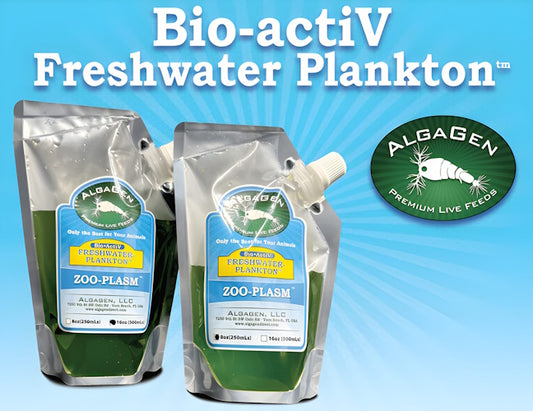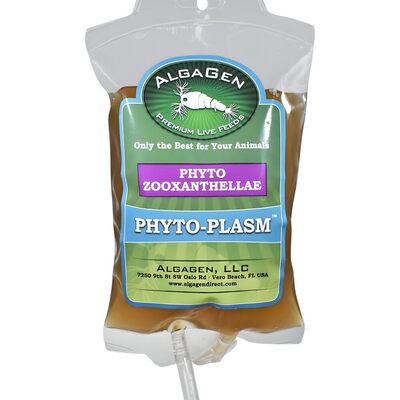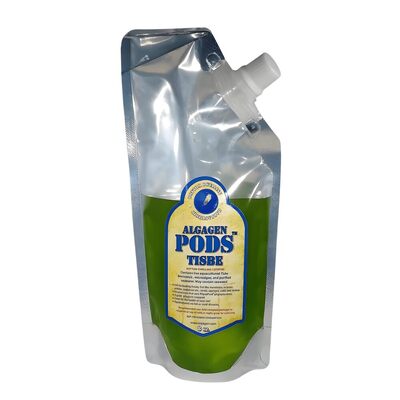Rotifers are microscopic zooplankton that are absolutely essential for fish survival-especially during the earliest, most vulnerable stages of life. Whether you’re a home aquarist or a professional breeder, understanding the role of rotifers can make the difference between success and disappointment in raising healthy fish.
Rotifers are widely used as the first live food for fish larvae and fry. Their small size (50–500 micrometers), soft bodies, and natural swimming motion make them perfect for tiny mouths and developing digestive systems.
For a deeper look at the importance of live foods, see our Top 5 Live Feeds for Thriving Reef Tank Ecosystems.
Why Rotifers Are the Ideal First Food
Rotifers are the gold standard for feeding fish larvae and fry for several reasons:
- Perfect Size: Rotifers are small enough for even the tiniest fish larvae to eat.
- Natural Movement: Their swimming stimulates hunting and feeding instincts.
- High Digestibility: Soft bodies are easy for fry to digest, maximizing nutrient uptake.
-
Rapid Reproduction: Rotifers can be cultured in large numbers, ensuring a steady supply.
Rotifers are rich in proteins, essential fatty acids (EPA, DHA), and vitamins. When gut-loaded with high-quality microalgae such as PhycoPure™ Reef Blend, their nutritional value increases even further. This supports rapid growth, strong immune systems, and high survival rates in fish fry and larvae.
Supporting Water Quality and Tank Balance
Rotifers are filter feeders that consume microalgae, bacteria, and organic detritus. This helps keep tanks cleaner by reducing excess nutrients and waste. Because live rotifers are quickly eaten, they’re less likely to decay and pollute the water compared to uneaten dry or frozen foods. Their presence also supports a diverse and stable aquarium microbiome.
Boosting Breeding Success and Survival Rates
Incorporating live rotifers into breeding setups leads to higher survival rates and healthier offspring. Their digestibility and high nutrient content make them especially suited for the delicate early stages of fish development, supporting faster growth and reducing mortality. Rotifers are also used to feed larval crustaceans, corals, jellyfish, and filter-feeding invertebrates.
Best Practices for Culturing and Using Rotifers
- Feed a blend of microalgae and enrichment products to maximize nutrition.
- Harvest and rinse rotifers daily to prevent waste buildup in cultures.
- Keep ammonia and nitrite low in both rotifer cultures and breeding tanks.
- Introduce rotifers in small, regular doses to match fish larvae feeding needs.
For more on culturing and feeding live foods, see Best Practices for Feeding Live Foods in Aquariums.
- Essential first food for fish larvae and fry
- Rich in proteins, essential fatty acids, and vitamins
- Stimulate natural feeding behaviors
- Boost breeding success and fry survival rates
- Help maintain water quality by consuming excess nutrients
- Support a balanced and biodiverse aquarium ecosystem
| Benefit | How Rotifers Help | Status |
|---|---|---|
| Fish Larvae Survival | Perfect size, digestible, nutrient-rich | Essential |
| Growth & Development | Deliver key fatty acids, vitamins, proteins | Vital |
| Water Quality | Consume algae, detritus, bacteria | Beneficial |
| Ecosystem Balance | Support food web, recycle nutrients | Critical |
“Rotifers are the unsung heroes of fish survival-fueling early growth, supporting water quality, and giving your aquarium’s youngest residents the best start possible.”
Conclusion
Rotifers are indispensable for fish survival, particularly in the vulnerable early stages of life. By providing a nutrient-dense, easily digestible, and readily available live food source, they ensure healthy growth, robust immune systems, and higher survival rates for fish larvae and fry. Incorporating live rotifers into your aquarium or breeding program is one of the most effective ways to support the long-term health and vitality of your aquatic inhabitants.







Recent post